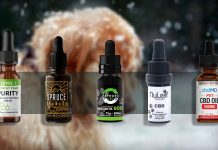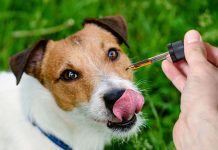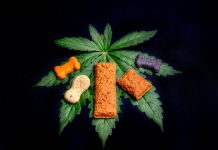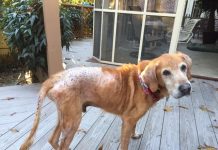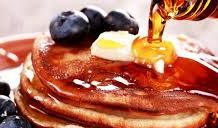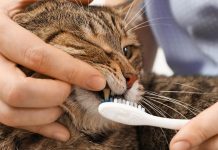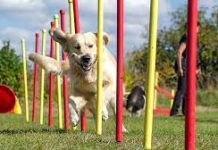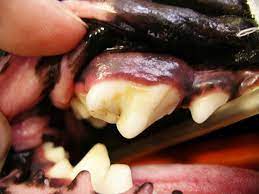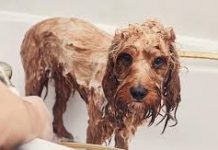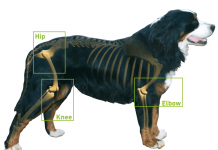You might think your canine’s teeth are considerably more grounded than yours, yet broken and broken teeth in canines aren’t exceptional. Acknowledge what signs to pay special attention to, and how to thwart issues.
Numerous people will overall misjudge their canines’ dental prosperity until an issue arises, such as broke or broken teeth. Grown-up canines have around 42 dependable teeth, so there is a huge load of objections in the mouth where injury can occur from the exercises of gnawing, playing, or investigating the environment. We should start with some dental prosperity basics.
Various sorts of teeth
There are three sorts of teeth in your canine’s mouth.
The incisors are single-established teeth situated toward the front of the mouth. They effectively handle food and articles, and furthermore license self-preparing to eliminate an ectoparasite (bug, tick, and so forth) or substances that might adhere to the hair (sap, and so on) In view of their adaptation and single-root connection to the basic bone, incisors are inclined to becoming versatile (free) because of periodontal infection.
The canine teeth (“canines”) aren’t selective to canines, regardless of their canine explicit name. The canines are tooth-like teeth that grip and tear food and different materials. As the canine teeth are longer than different teeth in the mouth, they are frequently inclined to injury and crack. Like the incisors, the canines have a solitary yet longer root that gives a sturdier connection to the fundamental alveolar bone.
The premolars are situated behind the canines. They have a few roots, giving a firm connection to the alveolar bone, tear and chew (bite) food and hold objects. My go-to veterinary dental trained professional, Dr. Anson Tsugawa, states that “the biggest of the biting teeth, the maxillary (upper jaw) fourth premolar tooth, additionally alluded to as a carnassial tooth, is the tooth that is most frequently cracked. This tooth is the third from the last tooth in the upper jaw, and has a crown formed loved a sideways number four.”
Tooth life structures
A canine’s tooth has many parts:
Crown – the part of the tooth that is noticeable over the gum line is known as the crown and is the most vulnerable to fracture. The crown is covered by a slender layer of finish, an extremely hard substance that safeguards the more profound layers of the tooth.
Dentin – The dentin is similarly as solid as possible bone, can detect cold, hotness, and contact, and lies profound under the defensive veneer.
Mash – The focal piece of the tooth is the mash, which is made out of veins, connective tissue, and nerves. The mash is the most delicate part of every tooth.
Root – The root secures the tooth to the steady alveolar bone by means of the periodontal tendon, and isn’t noticeable to the unaided eye except if there’s been extreme injury or downturn of the gingiva (“gums”).
Periodontal tendon – This tendon solidly connects teeth in their attachments to the hidden alveolar bone (mandible and maxilla).
Gingiva (gums) – The oral depression is lined by a dainty layer of vascular tissue that safeguards the bone. It’s known as the gingiva and is seen promptly contiguous all teeth except if the infection has caused a downturn (development away from the teeth or bone) or injury has torn it free.
Cusps – The tips of every tooth, which come to an adjusted or sharp point, are known as the cusps.
Tooth crack
Two essential sorts of tooth break might conceivably influence your dog. Confounded cracks are the seriously unsettling type in light of the fact that the mash cavity is uncovered, causing a more prominent probability of torment, draining, and movement of oral depression microbes into the circulation system.
Simple breaks don’t uncover the mash pit and may not need a fix or tooth extraction. However, they should in any case be evaluated by a veterinarian.
Clinical indications of crack
The clinical indications of a broken tooth might be self-evident or inconspicuous. contingent upon their sort and seriousness. Following are a few normal signs:
You might have the option to see your canine’s broken tooth when the mouth is open or then again assuming the gag or cheek edge is pulled back. Continuously be delicate while investigating your canine’s mouth, considering the probability of uneasiness related to tooth break.
At the point when the mash cavity is harmed, gentle or extreme draining can happen contingent upon the seriousness of the crack. Blood might trickle from your canine’s mouth quickly post-break, or be seen when food, a toy, or a treat is bitten.
At the beginning of a tooth break, or anytime a while later, your dog will probably encounter uneasiness that might appear as expressing. You could hear a sharp cry, delicate whine, or different commotions when the crack is controlled and torment is capable.
Tooth break can make your canine be less ready to bite food or treats. Thus, diminished hunger or interest in eating can happen.
While trying to soothe the inconvenience related to biting, your canine might bite utilizing just one side of his mouth. Furthermore, slobbering can happen from one or the other side of the mouth.
The canine mouth contains a lot of microorganisms that can enter the blood supply through the uncovered mash and encompass damaged or excited gingiva. A multiplication of mouth microbes causes what we veterinarians normally called oral rankness. Oral microorganisms can harm inside organs like the heart, respiratory lot, kidneys, liver, and others.
Normal reasons for tooth break
Canines like to investigate the world with their mouths and utilize their tongues and teeth to get different items. Normal tooth crack causes include:
Biting on hard articles: Almost any hard item can prompt cracked teeth.
Forceful biting and pulling: Dogs with forceful biting propensities and those that pull on toys are more inclined to tooth injury.
Obtuse injury – Most canines like to run and play and can cause gruff injury to their teeth from ramming into fixed items or getting toys. Being hit by a vehicle, kicked by a pony and different wounds can likewise bring about tooth harm.
 How are fractured teeth treated?
How are fractured teeth treated?
Numerous medicines are accessible, contingent upon the tooth or teeth that are impacted and the seriousness of the crack. The initial step is to have your dog analyzed by a veterinarian or veterinary dental specialist. An overall practice veterinarian might have what it takes to fittingly evaluate and oversee tooth breaks; then again, your canine might should allude to a veterinary dental expert who rehearses only in the field of dentistry. A board-guaranteed veterinary dental specialist in your space can be found by means of the American Veterinary Dental College.
Other than an actual assessment, your canine will probably have to have an assessment under sedation alongside radiographs (x-beams) to completely evaluate the break and get treatment.
Dr. Tsugawa says that straightforward tooth cracks “can frequently be dealt with safely (smoothing the unpleasant break edges and sap holding the presented dentin to forestall contamination), particularly whenever recognized early. In any case, with muddled tooth cracks, where the mash or nerve is uncovered, more specific consideration (root channel treatment) to keep away from loss of the tooth, might be demonstrated.” Treatments can incorporate extraction, root waterway, revamping the tooth, anti-microbial treatment, and torment the executives (for example NSAIDs, torment desensitizing prescriptions, needle therapy, spices, homeopathic, and so on)
Forestalling broke teeth
Anticipation is consistently the best medication. Continuously plan a couple of strides in front of your canine ally to forestall forceful biting on hard items and obtuse injury.
Likewise, since certain cracks might give no clinical indications, canines ought to have a dental test with a veterinarian something like one time each year. Debilitated and geriatric patients (more established than seven years) and those expecting meds to advance their wellbeing and personal satisfaction, ought to have an assessment like clockwork or all the more regularly relying upon the veterinarian.
Broken teeth can cause canines a ton of distress and even lead to disease. Yet, by going to preventive lengths, and looking for veterinary assistance assuming your little guy gives any indications that could highlight an issue, you can assist with guaranteeing his teeth stay solid and sound.
Views: 58






